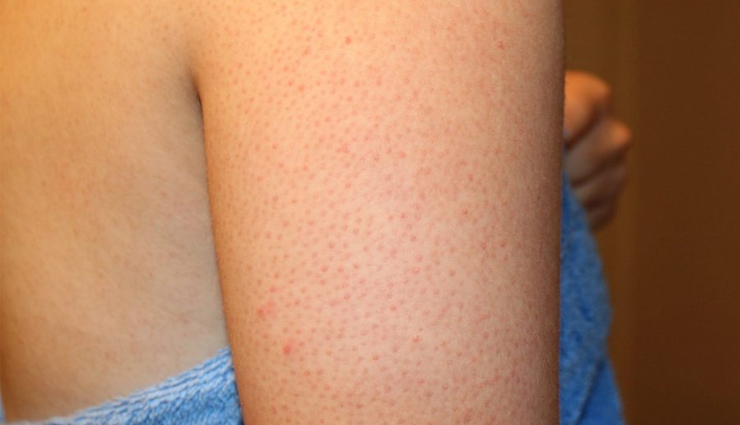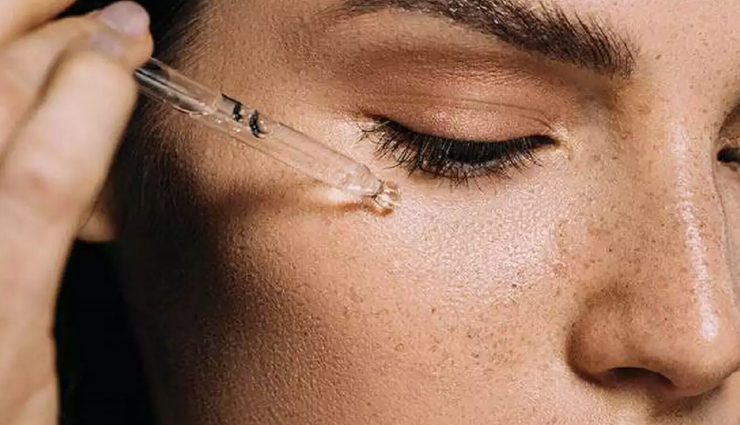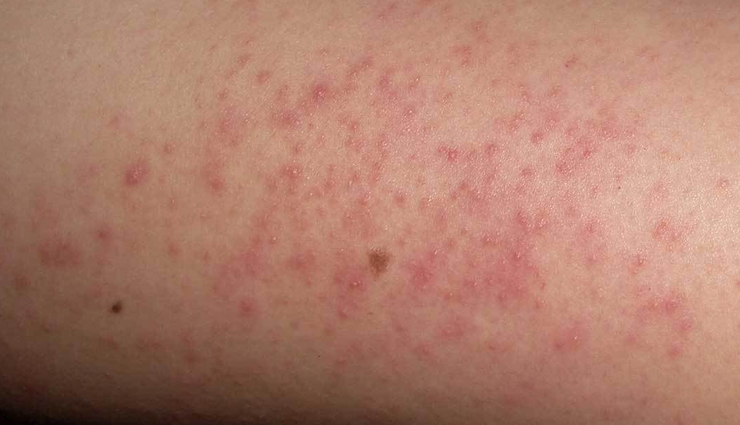5 Home Remedies To Get Rid Of Chicken Skin
By: Priyanka Maheshwari Sat, 26 Nov 2022 5:20:52

Keratosis pilaris, more commonly known as “chicken skin,” is a genetic condition of the skin’s hair follicles that affects 30-50 percent of the adult population and is defined by the appearance of rough, slightly red or brown bumps. Although they are medically harmless, they may occasionally cause minor irritation.
Chicken skin occurs due to the overproduction of keratin. This is a protein that protects epithelial cells from damage or stress and is the main structural material that forms the outer layer of human skin. When keratin clogs hair follicles, it appears as tiny red bumps with a rough texture. They often appear on the backs of arms, thighs, buttocks, and occasionally even on the cheeks.

# Go For Prescription Retinol
Retinol is a form of vitamin A, which has been clinically proven to enhance the unclogging of pores and to stimulate collagen production. Retinol-based products help smoothen the skin by gently exfoliating and removing dead skin cells and imperfections. Once the area begins to show signs of improvement in texture and tone, apply it every night before you turn in for the day. However, patience is key here as it may take anywhere between 3-6 months to see visible results.
# Use Keratolytic Products
Many keratolytic skincare products specifically manufactured to treat chicken skin help in removing keratin, which is the cause for the formation of bumps on the skin surface. Cosmetic products that contain urea, lactic acid, and glycerin are ideal for this function and must be used regularly to prevent and treat chicken skin. The idea is to loosen the accumulation of dead cells around the hair follicles and to keep your skin moisturized. Since keratolytic cleansers will cause some skin dryness, you must apply a moisturizer. Your dermatologist may prescribe a keratolytic moisturizer with 17.5 percent glycolic acid to reduce severity.

# Try Glycolic And Salicylic Acids
Glycolic acid is an alpha-hydroxy acid (AHA) and salicylic acid is a beta-hydroxy acid (BHA). While salicylic acid is a type of acne-fighting ingredient, glycolic acid helps in removing dead skin cells and reduces inflammation related to acne. In areas of your body that has thick skin, experts recommend using products containing a concentration of 10% or more glycolic for quicker results.
However, since different people have different skin types, salicylic acid can sometimes sting your skin and cause redness when you first begin using it. If irritation continues, use a milder product that has lower levels of salicylic acid.
# Avoid Using Fragranced Products
Sometimes, the condition of the chicken skin may develop or worsen because of using fragranced body products such as deodorants, perfumes, scented soaps, creams, and lotions. Even taking a very hot shower can cause this condition. Some creams designed to help treat the condition can be used regularly to effectively manage symptoms without irritation. Follow a fragrance-free skin care routine and take showers in lukewarm water while keeping the shower-time under seven minutes to minimize skin dehydration.

# Increase Intake Of Omega-3s
It’s a well-known fact that your food habits have a major role in your skin health. Some skincare experts recommend that people with this condition avoid dairy products and consume a healthy diet that hydrates skin from within. Most seafood is rich in omega-3s, which are crucial for skin moisturization and healthy skin cell function. So, consider including foods such as tuna, salmon, sardines, fish oil, oysters, soybeans, flaxseeds, and walnuts into your diet. Deficiency of omega-3 essential fatty acids is known to cause rough, scaly skin and dermatitis.





